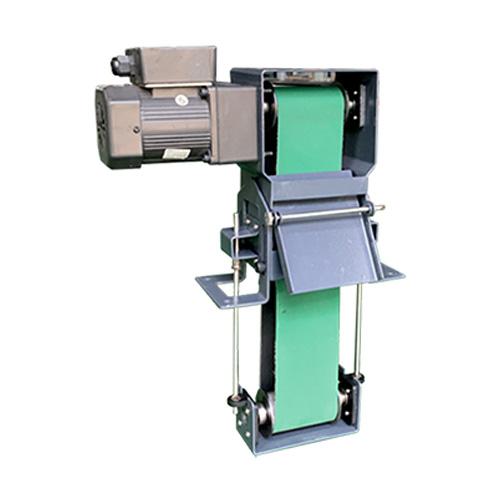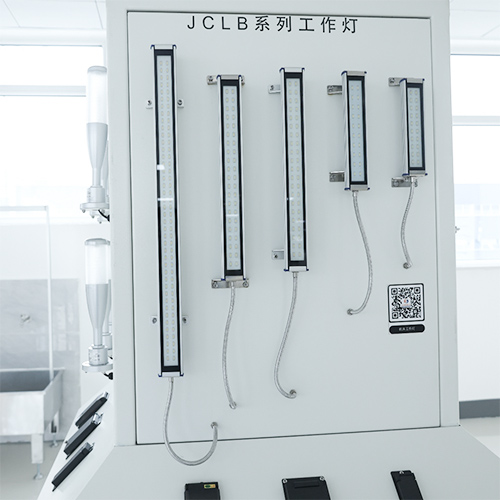-
WhatsAPP: +86 18706448138
-
Tengzhou, Shandong, China

How a Machine Door Safety Switch Prevents Accidents
This blog delves into how a machine door safety switch works, its different types, why it's indispensable for safety, and how it integrates.
Table of Contents
Introduction

In today’s automated and high-speed industrial environments, operator safety is of paramount importance. With heavy machinery, sharp tooling, and high-pressure systems running side by side, even a momentary lapse in safety protocol can lead to severe injuries or fatalities. One of the most effective tools for preventing such incidents is the machine door safety switch.
This device acts as a watchdog for machinery, ensuring that operations cease immediately when access points—such as doors, covers, or hatches—are opened. It’s not just about compliance; it’s about saving lives and maintaining smooth operations. This blog delves into how a machine door safety switch works, its different types, why it’s indispensable for safety, and how it integrates into modern manufacturing systems.
What Is a Machine Door Safety Switch?
A machine door safety switch is a protective device engineered to monitor the position of movable guards, doors, or covers on machinery. It prevents machines from operating when these guards are open or not properly secured, acting as a frontline defense against human-machine interaction during unsafe conditions.
These switches can be electromechanical or non-contact in nature. When the safety guard or door is closed and properly aligned, the switch completes a circuit, allowing the machine to operate. If the guard is opened, the circuit breaks, triggering an immediate stop signal to the machinery’s control system.
Key Functions:
- Immediate machine stop when the door or guard is opened.
- Monitoring and control of access points in real-time.
- Failsafe operation, ensuring the machine cannot operate unless the switch is engaged.
- Signal relay to safety relays or PLCs, forming part of an integrated safety system.
With increasing automation, the machine door safety switch is now a mandatory component in many industries to ensure operational integrity and personnel safety.
Types of Machine Door Safety Switches

Understanding the different types of machine door safety switches helps in selecting the right model for a specific application. Each type is tailored for particular operating conditions, door configurations, and safety requirements.
Keyed Interlock Switches
These switches use a physical key to permit access. The machine operates only when the key is inserted and locked in place. Removing the key disables the system. This ensures that maintenance personnel can remove the key while performing work, preventing anyone from restarting the machine until it’s returned.
- Best suited for maintenance zones.
- Prevents accidental restarts.
- Common in high-risk environments.
Non-Contact Safety Switches
These advanced switches use magnetic, RFID, or coded transponder technology to detect guard positions without requiring physical contact. They are ideal for food processing or medical environments where hygiene and regular wash-downs are required.
- No wear and tear due to non-contact mechanism.
- High resistance to tampering.
- Flexible mounting options.
Tongue-Operated Safety Switches
Designed for hinged or sliding doors, these switches engage when a tongue-shaped actuator is inserted into the housing unit. If the tongue is removed, the circuit breaks.
- Robust mechanical design.
- High reliability in dusty or dirty environments.
- Cost-effective for basic safety applications.
Hinge and Latch Safety Switches
These switches are integrated into the hinge or latch mechanism of a machine door. They are space-efficient and minimize tampering since they are part of the door assembly.
- Sleek, concealed design.
- Great for limited-space installations.
- Easy maintenance and cleaning.
Each of these switches offers unique benefits, and the choice depends on the industry, machinery type, environment, and safety standards in place.
Why Is a Machine Door Safety Switch Essential for Workplace Safety?
The implementation of a machine door safety switch is not just a precaution—it’s a necessity. Here’s why these devices are central to industrial safety:
Prevents Accidental Contact
Machinery with moving parts can cause severe injuries. A safety switch ensures the machine halts before an operator can access potentially dangerous areas.
Protects Maintenance and Service Workers
Routine servicing often requires workers to enter or interact with dangerous parts of machines. A properly installed switch ensures the machine is in a safe state before access is granted.
Reduces Risk of Human Error
Humans are prone to making mistakes. A safety switch acts as a backup to human decision-making, preventing operation when a door is open or misaligned.
Encourages Safer Work Practices
When workers know machines won’t operate unless doors are secure, they are more likely to follow proper protocols, contributing to a culture of safety.
Enhances Compliance
Meeting international and national safety standards (such as ISO 13849, OSHA 1910) is critical for avoiding fines and improving overall workplace reputation.
In essence, a machine door safety switch is a simple, reliable tool that brings peace of mind to operators, engineers, and business owners alike.
How a Machine Door Safety Switch Integrates Into Automation Systems
The effectiveness of a machine door safety switch lies in its seamless integration with broader safety systems. These systems work together to form a comprehensive safety net for operators.
Step-by-Step Functional Integration:
- Door Closed – Switch circuit is complete, machine can operate.
- Machine Running – System remains active as long as the door is secure.
- Door Opened – Switch circuit breaks, machine receives a stop signal.
- Machine Stops Immediately – Power is cut off or motion is halted by safety relays.
- Reset Required – The system needs manual reset before restarting.
Such systems often work in tandem with emergency stop buttons, safety light curtains, and safety PLCs. The integration ensures that safety is not a secondary consideration but a primary design feature.
Compliance and Regulatory Standards
To ensure maximum protection and legal operation, machine door safety switches must conform to stringent standards and certifications. Below is a comparison of the key regulatory standards:
| Regulatory Body | Standard Code | Description |
|---|---|---|
| ISO | ISO 14119 | Interlocking devices related to machine guards |
| IEC | IEC 60947-5-1 | Low-voltage switchgear and control gear |
| OSHA | 29 CFR 1910.212 | Machine guarding general requirements |
| EN | EN ISO 13849-1 | Safety of machinery – Performance levels of safety-related parts |
Common Applications of Machine Door Safety Switches

CNC Machines
Operators need access to tooling areas for setup and part replacement. A machine door safety switch ensures spindles stop rotating before access.
Robotic Arms
In robotic cells, a switch ensures the robot arm powers down before a technician enters the workspace.
Food Processing Equipment
Sanitary design is crucial. Non-contact switches are perfect for wash-down zones to prevent operation during cleaning.
Packaging Machinery
In fast-paced packaging lines, switches prevent access to sealing or cutting sections while the machine is running.
Pharmaceutical Blenders
Switches ensure that the rotating mixer or agitator stops when the door is opened.
These applications highlight the universal need for door interlocks across sectors like automotive, electronics, food and beverage, and chemical processing.
Maintenance and Troubleshooting Tips
A machine door safety switch must function flawlessly at all times. Maintenance is essential for keeping the device operational and reliable.
Monthly Visual Inspections
Check for cracks, corrosion, or loose mounts. Damage to the switch housing can compromise performance.
Electrical Connection Checks
Loose or frayed wires can interrupt signal transmission. Verify that terminals are secure and connections are clean.
Functional Tests
Simulate door openings and closings during downtime. Ensure the switch triggers machine stops accurately every time.
Software and Firmware Updates
For smart safety switches using RFID or programmable logic, update the firmware periodically for bug fixes and enhanced compatibility.
Failure to maintain the switch can result in costly machine damage, downtime, and increased safety risks.
How to Choose the Right Machine Door Safety Switch

Selecting the correct safety switch is critical. Consider the following factors during your decision-making process:
Environmental Conditions
Is the machine exposed to water, dust, oil, or chemicals? Choose IP-rated or corrosion-resistant switches accordingly.
Mounting Requirements
Different switches are suitable for different door configurations—hinged, sliding, or removable.
Safety Category
Determine the required Performance Level (PL) or Safety Integrity Level (SIL) as per your risk assessment.
Contact Type and Redundancy
Dual-channel (redundant) switches provide higher safety, especially when used with safety relays.
Diagnostic Capabilities
Advanced models offer LED indicators or diagnostic signals for real-time system health monitoring.
By aligning your selection criteria with operational needs, you ensure maximum effectiveness and safety compliance.
Conclusion
In any industrial or automated environment, safety should never be compromised. The machine door safety switch stands out as a critical component that prevents accidents, reduces downtime, and ensures compliance with global safety standards.
Whether you’re upgrading your facility or building new systems, don’t underestimate the value of a properly installed safety switch. It could be the difference between a safe workday and a catastrophic accident.
Looking to enhance your machine safety systems?
Contact us today to learn more about how a machine door safety switch can be integrated into your facility.
FAQ
What industries use machine door safety switches?
Industries such as automotive, food processing, pharmaceuticals, packaging, and electronics widely use machine door safety switches to enhance operator safety.
Can I install a machine door safety switch myself?
While some models are DIY-friendly, it’s recommended that installation be carried out by a certified technician, especially when the switch integrates with complex control systems.
How often should I test the safety switch?
You should test the switch at least once a month and after every major maintenance session to ensure proper functionality.


